| |
|
Xiamen Oil Paintings, Wholesale Direct!
|
|
100% hand painted, 100% cotton canvas, 100% money back if not satisfaction. |
|
|
|
|
ART WORKS INDEX
A
B
C
D
E
F
G
H
I
J
K
L
M
N
O
P
Q
R
S
T
U
V
W
X
Y
Z
|
|
ARTISTS INDEX
A
B
C
D
E
F
G
H
I
J
K
L
M
N
O
P
Q
R
S
T
U
V
W
X
Y
Z
|
|
|
|
 |
James Gibbs
|
|
1682-1754
James Gibbs was born at Footdeesmire near Aberdeen, Scotland, in December 1682, the younger son of a Scottish gentleman. As a young man, he traveled on the Continent, pursuing his fondness for drawing. In Rome he determined to become an architect and entered the school of Carlo Fontana. Gibbs became acquainted with many members of the English aristocracy, for whom he made drawings and who were helpful to him in later life. He returned to England in 1709.
Through the influence of Edward Harley, Earl of Oxford, Gibbs was made one of the surveyors to the commissioners for building 50 new churches in London in 1713, and in this capacity he designed St. Mary-le-Strand (1714-1717), his first public building. Here he expressed not only influences of Sir Christopher Wren but also ideas absorbed from Italian baroque and mannerist architecture. Gibbs was employed by Lord Burlington in rebuilding the east block of Burlington House, Piccadilly, before that patron embraced Palladianism, but was superseded by the earl protege, Colen Campbell.
When the Whigs, who supported the Palladians, came to power, Gibbs as a Tory of baroque tendencies lost his official post in 1715, but his private practice among Tory patrons continued to be exclusive and remunerative. He built Cannons House, Middlesex (1716-1719; demolished 1747) for the Duke of Chandos; added a chapel and library at Wimpole Hall, Cambridgeshire (ca. 1720), for Lord Harley; built the exquisite Octagon Room at Twickenham, Middlesex (1720), with beautiful plasterwork by Italian stuccoworkers; and erected Ditchley House, Oxfordshire (1720-1725), probably his most splendid house, for the Earl of Lichfield, again with remarkable plasterwork by Italian craftsmen.
But public commissions were not entirely lacking. In 1720 Gibbs designed St. Martins-in-the-Fields (built 1722-1726), one of his outstandingly beautiful works. Like St. Mary-le-Strand and many of his houses, the interior was decorated with plasterwork by the fashionable Italian stuccoworkers, who probably came to England through his encouragement. St. Martins was followed by another building of extreme elegance and dignity, the Senate House at Cambridge (1722-1730), as well as the new buildings of King College. Many of the ornamental buildings in the park at Stowe House, Buckinghamshire, are his work, including the Temple of Diana (1726), the Temple of Friendship (1739), the Gothic Temple (1740), and the Column with a statue of Lord Cobham.
Gibbs general influence among architects and clients was great because of his exhaustive knowledge of architecture acquired through long study in Rome, an experience rare among architects of that generation, although later more common. This influence he extended by means of his Book of Architecture (1728), a record of both his executed and unexecuted work, and especially his Rules for Drawing the Several Parts of Architecture (1732), a work used by countless architects, students, scholars, and builders up to the present day.
Of Gibbs later works the circular Radcliffe Library at Oxford (1737-1749) is his most ambitious and monumental achievement; it shows much influence of Nicholas Hawksmoor. Gibbs published the designs in the large folio volume Bibliotheca Radcliviana in 1747, and he received from the university the honorary degree of master of arts. He designed the new decorations of Ragley Hall, Warwickshire (ca. 1750-1755), in the rococo taste then becoming fashionable. A distinguished late work is the church of St. Nicholas at Aberdeen (1751-1755). In his last years Gibbs held the sinecure post of architect to the Office of Ordnance. He died in London on Aug. 5, 1754.
In his early buildings, especially in his churches, Gibbs displayed that discreet form of the baroque which he had absorbed from Carlo Fontana in Rome and also from Wren example. Characteristic features of his work are window architraves interrupted by prominent rustication blocks, oeil de boeuf (oxeye) windows, boldly projecting cornices, and parapets topped by urns. In his later buildings the exterior form conformed more closely to severe Palladian principles, but the interiors retained a baroque exuberance.
|
|
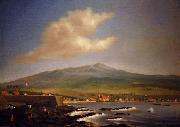 |
James Gay Sawkins
|
|
(1806-1878) was an artist who was born in 1806 in Yeovil, Somerset, England. At the age of 14, he moved to Baltimore, Maryland with his family, where he made his living painting miniature portraits on ivory. He lived in Cuba from 1835 to 1845 and visited Hawaii from January, 1850 to June, 1852. After working in Australia, he returned to England in 1855. Sawkins died in 1878 in Turnham Green (near London), England.
The Honolulu Academy of Arts, Mission House Museum (Honolulu, Hawaii) and the National Library of Australia (Canberra) are among the public collections holding works by James Gay Sawkins.
|
|
|
|
 |
James Ensor
|
|
Belgian
1860-1949
Belgian painter, printmaker and draughtsman. No single label adequately describes the visionary work produced by Ensor between 1880 and 1900, his most productive period. His pictures from that time have both Symbolist and Realist aspects, and in spite of his dismissal of the Impressionists as superficial daubers he was profoundly concerned with the effects of light. His imagery and technical procedures anticipated the colouristic brilliance and violent impact of Fauvism and German Expressionism and the psychological fantasies of Surrealism. Ensor most memorable and influential work was almost exclusively produced before 1900, but he was largely unrecognized before the 1920s in his own country. His work was highly influential in Germany, however: Emil Nolde visited him in 1911, and was influenced by his use of masks; Paul Klee mentions him admiringly in his diaries; Erich Heckel came to see him in the middle of the war and painted his portrait (1930; Cologne, Wallraf-Richartz-Mus.); Alfred Kubin owned several of his prints, while Marc Chagall and George Grosz also adapted certain elements from Ensor. All the artists of the Cobra group saw him as a master. He influenced many Belgian artists including Leon Spilliaert, Rik Wouters, Constant Permeke, Frits van den Berghe, Paul Delvaux and Pierre Alechinsky.
|
|
|
|
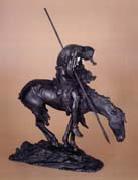 |
James Earle Fraser
|
|
American Sculptor, 1876-1953,American sculptor, b. Winona, Minn., studied at the Art Institute of Chicago and in Paris. The best known of his many works are The End of the Trail (Visalia, Calif.), the designs for the Indian head nickel, and a statue of Alexander Hamilton
|
|
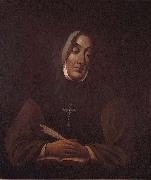 |
James Duncan
|
|
painted Portrait of Mere Marguerite d'Youville in 1825-1881
|
|
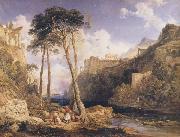 |
James Duffield Harding
|
|
English Painter, ca.1797-1863
English painter, engraver and writer. He received his first lessons in painting from his father, J. Harding (d 1846), who was a pupil of Paul Sandby. By 1807 the family had moved to Greenwich where Harding spent much of his time drawing and painting in Greenwich Park. In 1811 at the age of 14 he exhibited for the first time at the Royal Academy. He had lessons in watercolour painting from Samuel Prout and in 1816 he won the Society of Arts silver medal for landscape painting.
|
|
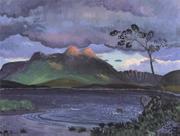 |
James Dickson Innes
|
|
A British landscape painter who specialized in mountain scenes
Welsh Painter, 1887-1914
was a Welsh landscape painter who worked in both oils and water-colours. He was born in Llanelli, his father being a Scotsman who had found employment at the local tinplate works. He was educated at Christ College, Brecon, Carmarthen School of Art, and the Slade School of Art. He was a member of the Camden Town Group.[1] In 1911 he spent some time painting with Augustus John in North Wales, but much of his work was done overseas, mainly in France and Spain, foreign travel having been prescribed after he was diagnosed with tuberculosis.
|
|
 |
James Collinson
|
|
English Pre-Raphaelite Painter, 1825-1881
English painter. He was the son of a Nottinghamshire bookseller. He studied at the Royal Academy Schools, London, where he was a fellow student of Dante Gabriel Rossetti and William Holman Hunt. Although quiet and unobtrusive, he caught the attention of critics when he exhibited the Charity Boy De but at the Royal Academy in 1847 (sold London, Christie, 26 Oct 1979, lot 256). The painting was praised for its truthfulness and use of minute detail. It was admired by Rossetti, who sought out Collinson and befriended him. The following year saw the formation of the Pre-Raphaelite Brotherhood (PRB), which Rossetti invited Collinson to join. Around this date Collinson renounced Catholicism and became engaged to Christina Rossetti; possibly this influenced the other members of the PRB in favour of his election to their number. However, he was never a leading member of the Brotherhood.
|
|
|
|
James clarke hook,r.a
|
|
1819-1907
English painter. He studied with the portrait painter John Jackson and entered the Royal Academy Schools, London, in 1836, winning medals for drawing and historical painting. His Academy d?but was in 1839 with The Hard Task (untraced). In 1844 Hook was awarded a gold medal in the Houses of Parliament competition. In 1846 he won a Royal Academy travelling scholarship, enabling him to spend two years in Italy, where he was strongly influenced by the colouring of the Venetian painters. On his return his work included a series of subjects from Venetian history, including The Rescue of the Brides of Venice
|
|
|
|
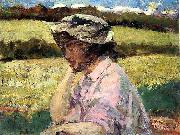 |
James Carroll Beckwith
|
|
(September 23, 1852 - October 24, 1917) was an American landscape, portrait and genre painter whose Impressionist style led to his recognition in the late nineteenth century as a prominent figure in American art.
Carroll Beckwith, as he preferred to be known, was born in Hannibal, Missouri on 23 September 1852, the son of N. M. Beckwith, who was United States Commissioner-General at the Paris Exposition of 1867. However, he grew up in Chicago where his father started a wholesale grocery business. In 1868 aged 16 he studied art at the Chicago Academy of Design under Walter Shirlaw until the great fire of 1871 destroyed eveything (including much of the heart of the city). He then went to New York and studied at the National Academy of Design (of which he afterwards became a member) in New York City under Lemuel Wilmarth and later traveled on to Paris, staying there from November 1873 until 1878.
|
|
|
|
|
|
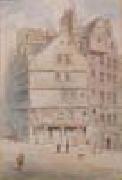 |
James Baynes
|
|
James Baynes (5 April 1766 ?C 12 May 1837) was an English watercolour painter and drawing-master.
Little is known of his family apart from the fact that he was born in Lancaster as the song of a local tradesman and was the eldest of six children, his grandfather being a Catholic priest in Kirkby Lonsdale where his father was born. As a boy he showed a love of the arts and had been employed to draw heads and work devices until Dr. Campbell, a local Physician, having seen some of these works sent some sketches to his friend George Romney. The young Baynes was then sent to London to study under Romney at the expense of Dr. Campbell.
In 1784, at the age of 18 he became a student at the Royal Academy. He wedded Mary Mann (1766-1845) in 1785 at Marylebone Church, London. Their son, Thomas Mann Baynes (1794-1854), was also became a noted watercolour artist.
|
|
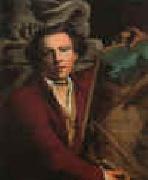 |
James Barry
|
|
b.Oct. 11, 1741, Cork, County Cork, Ire.
d.Feb. 22, 1806, London, England.
Irish James Barry Gallery
was born on 9th November at Captain Lieutenant Bouchiers quarters at the Old Train Barrack Yard in Ann Street, Belfast, Co. Antrim in the north of Ireland.
Although Barry lived his adult life as a man, his true gender is unknown. It is widely accepted that Barry was a woman who chose to live as a man so that he might be accepted as a university student and be able to pursue his chosen career as a surgeon.
|
|
|
|
|
|
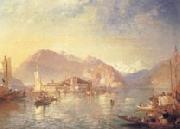 |
James Baker Pyne
|
|
English Painter, 1800-1870
He was articled to a Bristol attorney, but around 1821 he took up painting and exhibited at the Bristol Gallery of Arts in 1824. Apparently self-taught, he worked closely with the Bristol artist Samuel Jackson (1794-1869) for a time and was influenced by the poetic landscapes of Francis Danby. In 1835 he moved to London and exhibited at the Royal Academy the following year. He showed seven pictures there altogether, but he also exhibited at the British Institution and showed 206 works at the Society of British Artists. Although technically accomplished, Pyne's work is curiously lacking in distinction. He imitated many artists but never found a style of his own. His early views of Bristol are among his best work, a good example being View of the Avon from Durdham Down (1829; Bristol, Mus. & A.G.). He also painted some lively coast scenes such as Whitby (Leicester, Mus. & A.G.). He was less successful when emulating J. M. W. Turner.
|
|
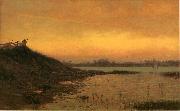 |
James Augustus Suydam
|
|
(1819-1865) architect, lawyer, and artist; as an artist was considered one of the premier Luminism painters. He is widely known as an American landscape painter and one of the leading members of the Hudson River School.
James Augustus Suydam was descended from an old New York Dutch merchant family. He graduated from New York University (then the University of the City of New York), and began his career as a businessman but turned a significant portion of his energies to painting, studying under famed artist and portrait painter Minor C. Kellogg. At the age of thirty he was elected to the Century Association.
One of the "regulars" who gathered to paint at North Conway, New Hampshire, he exhibited Conway Meadows at the New York Athenaeum and Boston Athenaeum. He opened his studio at the noted 10th Street Studio Building, New York City, in 1858. The following year he was elected an honorary professional member in the prestigious National Academy of Design, which granted him full membership in 1861. He died suddenly in North Conway at the age of 46.
James Suydam was described by his friend, the accomplished artist Sanford Robinson Gifford as a "thoroughly educated and accomplished man. " In addition to his work as an artist, which he began only after working in law and architecture, he was widely read and well-versed in history, philosophy, and the sciences. His work as a landscape painter reflects this breadth of knowledge and reveals Suydam as a deeply spiritual individual. Using his familiarity with science, Suydam reduced nature to calm, clean, planar forms, and then distorted proportional relations so that God's creations loomed superior over the work of man.
The National Academy has most of his works such as Paradise Rocks (1865), and the Taft family's Taft Museum also holds works. The Taft also has a podcast website for this artist.
A painting of Gifford's from 1859 which Suydam, according to a report, "donated to the [National] academy in 1865," became the subject of a deaccession controversy at the Academy in late 2008.
|
|
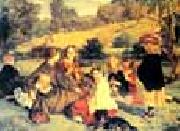 |
James Archer
|
|
1823-1904
British
James Archer (1823-1904) was a portrait-painter. He was born in Edinburgh, Scotland. His best-known work includes children and people in costume as its subjects becoming the first Victorian painter to do children's portraits in period costume. He studied at the Trustee's Academy in Edinburgh under Sir William Allan. At Archer painted chalk portraits, but in 1849 he exhibited his first historical picture 'The Last Supper' at the Royal Scottish Academy. His work after that mostly consisted of scenes taken from literature or legends that were popular at the time, such as Shakespeare and King Arthur. In about 1859 he began to paint a series of Arthurian subjects, including 'La Morte d'Arthur' and 'Sir Lancelot and Queen Guinevere'. James Archer died in 1904 in Haslemere in Surrey, England, survived by his son and three daughters from his marriage to Jane Clerk.
|
|
 |
James Abbott Mcneill Whistler
|
|
American Tonalist Painter and Printmaker, 1834-1903, He was an American-born, British-based artist. Averse to sentimentality and moral allusion in painting, he was a leading proponent of the credo "art for art's sake". His famous signature for his paintings was in the shape of a stylized butterfly possessing a long stinger for a tail.
|
|
|
|
|
|
|
|
 |
Jakub Schikaneder
|
|
(February 27, 1855, Prague - November 15, 1924, Prague) was a Czech painter, known for his soft paintings of the outdoors, often lonely in mood. The National Gallery in Prague held an exhibition of his paintings from May 1998 until January 1999.
He was descended from Urban Schikaneder, the elder brother of the librettist Emanuel Schikaneder.
|
|
 |
Jakob Smits
|
|
Jakob Smits or Jacob Smits (Rotterdam, 9 July 1855 - Achterbos (Mol), 15 February 1928) was a Dutch-Flemish painter. He was born as son of a decorator. Jakob studied in Rotterdam at the academy and helped its father in the decoration business. From 1873 up to 1876 het studied at the Academy in Brussels, and afterwards also in Munich (1878-1880), Vienna (1880) and Rome (1880). In 1882, Jakob married his cousin Antje Doetje Kramer. They settled in Amsterdam, where Smits worked as a painter. He carried out, among other things, tasks for the museum Boijmans-Van Beuningen in Rotterdam. Out of the marriage of Jakob and Antje two children, Theodora and Annie, were born. In 1884, the couple divorced.
Jakob Smits moved to Blaricum and in Haarlem becomes director of the Nijverheids- en Decoratieschool (E: Industry and Decoration school). He gets to know Albert Neuhuys, a painter of the The Hague School, and together they make excursions to Drenthe and the Campine in Belgium. Jakob Smits becomes impressed by the Campine landscape and he establishes himself in 1888, definitively in Achterbos (Mol). He pays 2,000 Belgian francs for a small farm which he develops to his Malvinahof. In the same year he marries Malvina Dedeyn, the daughter of a Brussels lawyer, who is disinherited because of this marriage. Smits lives in poverty while he works tirelessly for what he will call my simple work, symbolic, poetic and real. In 1897, he received a gold medal for his exhibitions of large water-colour paintings on a gold background in Munich and Dresden. He also paints a lot of portraits, especially of Malvina and of their children Boby, Marguerite and Kobe. In 1899 destiny strikes: in a few days time he loses his daughter Alice and his wife. In 1901, Smits marries with Josine Van Cauteren. In the same year he holds his first individual exposition in Antwerp. There he obtains much praise of colleagues and critics but finds no buyer for his work. The exhibited work De vader van de veroordeelde (E: the father of the convict) was acquired later that year by the Museum of Brussels.
Smits financial situation improved somewhat, but his family was put heavily on the test. In 1903 both his parents were ruined by a robbery and as a resulthe now had nine family members to maintain. At the request of the municipal authorities of Mol, Smits in 1907, arranged an international exhibition of artists who came to paint landscapes in Mol and its surroundings. The artist Paula Van Rompa-Zenke belonged to the arranging committee. There were no less than 68 painters participating, with Germans, Dutch, and Americans coming to Mol. The term Molse School was born. In 1910, Smits published an album with 25 engravings, which was dedicated to Queen Elisabeth. In 1912, the young Dirk Baksteen became a student of Smits.
In 1914, Smits stopped with the production of art work. He became President of the Comite voor hulpverlening en voedselvoorziening van het canton Mol (E: Committee for assistance and food supplies of the canton Mol). After World War I he continued his work with a totally new vision and style as engrave and painter.
|
|
 |
jakob seisenegger
|
|
Jakob Seisenegger (1505 ?C 1567) was an Austrian painter used by Charles V. He won international fame for his use of full-length poses in his portraits, creating a model used by future artists, such as François Clouet. His portrait Emperor Charles V with Hound (1532), currently resides in the Kunsthistorisches Museum Vienna.
|
|
|
|
 |
Jakob Mertens
|
|
Jakob Merten (August 11, 1809 - February 22, 1872) was a German Catholic theologian who was born in Wittlich.
He studied theology in Trier, where in 1833 he received his ordination. Subsequently he became a chaplain in Trier, where he worked closely with Franz Peter Knoodt (1811-1889). From 1843 to 1868 he was a professor of philosophy at the Episcopal Seminary in Trier.
Initially a prominent follower of Anton Genther's philosophy, Merten eventually abandoned Gentherianism as his career progressed. He was author of an essay on Gentherian philosophy titled Hauptfragen der Metaphysik in Verbindung mit der Speculation (Primary Questions of Metaphysics in Association with Speculation) (1840). Other noted works by Merten include:
Grundriss der Metaphysik, (Outline of Metaphysics); 1848
Der selige Frings und sein Freund als Antigentherianer; 1852
Bemerkungen zur Metaphysik von Balmes, (Remarks on the Metaphysics of Balmes); 1859
|
|
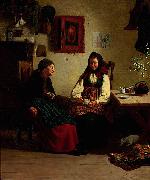 |
Jakob Kulle
|
|
painted Allmogeinterior med kaffedrickande kvinnor in 1876
|
|
|
|
|
|
|
|
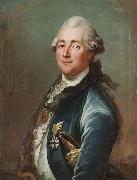 |
Jakob Bjork
|
|
painted Portrait of Jacob Johan Anckarstrom the older in 1776(1776)
|
|
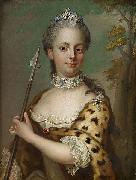 |
Jakob Bjock
|
|
Jakob Björck (1726 - 1793, Stockholm ) was a Swedish portrait painter. He was a student of the pastellist Gustaf Lundberg.
|
|
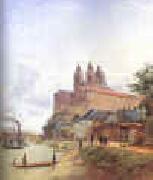 |
Jakob Alt
|
|
1789-1872
Austrian
Jakob Wassermann was born on March 10, 1873, in Furth, the son of a Jewish merchant. After a childhood with many restrictions, he began his career as an office clerk, in Munich and then in Freiburg. In 1898 he moved to Vienna and eventually established himself as a writer. Derivative and imitative, Wassermanns novels showed from the outset a strong dependence upon Fyodor Dostoevsky - particularly in his fondness for the psychological probing of criminals and social outcasts - as well as the influence of the master of the romantic horror and detective story, E. T. A. Hoffmann.
Wassermanns first significant work is Die Juden von Zirndorf (1897, The Jews of Zirndorf), in which his deep knowledge of his own community in F??rth and Nuremberg stands him in good stead. As in many of his other works, Wassermanns preoccupation with innocence and redemption is here interleaved with a somewhat crass depiction of depravity and superstition. Der Moloch (1902) pays tribute to the contemporary literary cult of the great city (here Vienna), seen as an all-devouring monster of sin and perversion. Caspar Hauser (1908) is probably the authors best novel; the book, based on fact, deals with the case of the mute youth who appeared one day in 1828 on the streets of Nuremberg. Resemblances to Dostoevskys The Idiot may also be noted in this tale of the rejection and contamination of innate purity by corrupt society.
After Caspar Hauser Wassermanns novels and short stories become increasingly preoccupied with bizarre and perverse anecdotes and intrigue, often initially drawn from biography or the newspapers. Das Gansemannchen (1915; The Goose Man) illuminates the problem involved in simultaneous cohabitation with two wives. Christian Wahnschaffe (1919) exploits the theme of the rich mans son who rejects the world to turn toward Buddhism. Der Fall Maurizius (1928, The Mauritius Case) is a type of detective novel made colorful by excursions into hypnosis but also weighed down by a tedious mass of psychological dissection. Like Honor?? de Balzac, whom he imitated, Wassermann introduces the same characters into different novels; thus Etzel Andergast (1931) is a sequel to The Mauritius Case, and its hero, Joseph Kerkhoven, reappears in Joseph Kerkhovens dritte Existenz (1934, Joseph Kerkhovens Third Existence).
Wassermann is a somewhat uneven and labored writer, and he cannot in any sense be considered a stylist. His novels are often marred by diffuseness and miasmic obscurity. At the same time his extensive output is of considerable historical interest and illuminates rather well the consequences of marriage between the new depth psychology and the popular novel of sensation and crime. He died on Jan. 1, 1934, in Alt-Aussee.
|
|
 |
jaime serra
|
|
(birth unknown-died after 1405) was a Catalonian painter. Serra was influenced heavily by a Sienese style introduced by Ferrer Bassa. His altarpiece The Holy Spirit can be found in the Manresa cathedral.
|
|
|
|
|
|
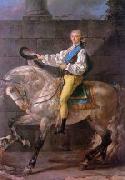 |
Jacques-Louis David
|
|
Jacques-Louis David, France Neoclassicism painter, b.1748 - d.1835. Jacques-Louis David is famous for his huge, dramatic canvasses of Napoleon and other historical figures, including Oath of the Horatii (1784), Death of Marat (1793) and The Sabine Women (1799). Early in his career he was a leader in the neoclassical movement; later his subjects became more modern and political. David was himself active in the French Revolution as a supporter of Robespierre and is sometimes called the chief propagandist for the Revolution; after the Reign of Terror ended he was briefly imprisoned for his actions. When Napoleon took power David became his court painter and created several grand canvasses of the Emperor, including the heroic Napoleon Bonaparte Crossing the Alps (1801) and the enormous Coronation of Napoleon and Josephine (1807).
|
|
 |
Jacques-Louis David
|
|
French
b.Aug. 30, 1748, Paris
d.Dec. 29, 1825, Brussels
Jacques-Louis David is famous for his huge, dramatic canvasses of Napoleon and other historical figures, including Oath of the Horatii (1784), Death of Marat (1793) and The Sabine Women (1799). Early in his career he was a leader in the neoclassical movement; later his subjects became more modern and political. David was himself active in the French Revolution as a supporter of Robespierre and is sometimes called the chief propagandist for the Revolution; after the Reign of Terror ended he was briefly imprisoned for his actions. When Napoleon took power David became his court painter and created several grand canvasses of the Emperor, including the heroic Napoleon Bonaparte Crossing the Alps (1801) and the enormous Coronation of Napoleon and Josephine (1807). David also painted Napoleon in His Study (1812), with its famous image of Napoleon with one hand tucked inside his vest. After Napoleon ouster David went in exile to Brussels, where he remained until his 1825 death
|
|
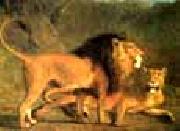 |
Jacques-Laurent Agasse
|
|
1767-1849
Swiss
Jacques-Laurent Agasse Galleries
(b Geneva, 24 March 1767; d London, 27 Dec 1849). English painter of Swiss birth. Born into a wealthy and politically influential Huguenot family, Agasse spent his early childhood at the country estate of Cravin, where he may have developed the interest in animals and natural history that was to guide his later career as an artist in England. Agasse trained first at the Ecole du Colibri in Geneva and subsequently in Paris under Jacques-Louis David (beginning in 1787) and possibly under Horace Vernet. His early artistic output consisted chiefly of unpretentious silhouette cut-outs in the style of Jean-Daniel Huber. At this time he also undertook a serious study of dissection and veterinary science.
|
|
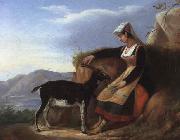 |
Jacques-Francois Ochard
|
|
was a French artist, remembered as the first art teacher of Claude Monet at his high school.
Ochard had been a student of Jacques-Louis David (1748-1825), and lived in Normandy, to where Monet's family had moved in 1845. Ochard's method of instruction was the traditional one of drawing from plaster casts of the human figure.
|
|
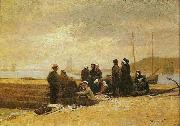 |
Jacques-Eugene Feyen
|
|
(1815, in Bey-sur-Seille, Meurthe-et-Moselle - 1908) was a French painter.
The elder brother of painter Auguste Feyen-Perrin, Jacques-Eugene enrolled at the Ecole des Beaux-Arts and studied under Paul Delaroche. He had a notable career at the Paris Salon from 1841 to 1882. Vincent Van Gogh was a fan of Feyen and describes him as, "one of the few painters who pictures intimate modern life as it really is, and does not turn it into fashion plates." He set up studio and settled in summer in the town of Cancale.He spent several months every year painting views of Cancale, the oyster-picking Cancalaises and the bay of Mont St. Michel, and his paintings still enjoy a steady fame.
|
|
 |
Jacques-Emile Blanche
|
|
(1 January 1861 - 20 September 1942) was a French painter born in Paris. His father was a successful psychiatrist who ran a fashionable clinic, and Blanche was brought up in the rich Parisian neighborhood of Passy in a house that had belonged to the Princesse de Lamballe. Although he received some instruction in painting from Henri Gervex, he may be regarded as self-taught. He became a very successful portrait painter, with a style derived from 18th-century English painters such as Thomas Gainsborough as well as Edouard Manet and John Singer Sargent. He worked in London, where he spent time from 1870 on, as well as Paris, where he exhibited at the Salon and the Sociate Nationale des Beaux-Arts. One of his closest friends was Marcel Proust, who helped edit several of Blanche's publications. He also knew Henry James and is mentioned in Gertrude Stein's The Autobiography of Alice B. Toklas. Among the painter's most famous works are portraits of his father, Marcel Proust (Private collection, Paris), the poet Pierre Louÿs, the Thaulow family (Musee d'Orsay, Paris), Aubrey Beardsley (National Portrait Gallery, London), and Yvette Guilbert.
He was the author of the unreliable Portraits of a Lifetime: the late Victorian era: the Edwardian pageant: 1870-1914 (London: J.M. Dent, 1937) and More Portraits of a Lifetime, 1918-1938 (London: J.M. Dent, 1939).
|
|
 |
Jacques Sablet
|
|
Jacques Sablet (1749 - 1803) was a Swiss painter. Son of a decorator and gilder from Lausanne, he studied with his father before moving to Paris in 1772; there he worked with Joseph-Marie Vien for three years. When in 1775 Vien was named director of the French Academy in Rome, Sablet accompanied him there. His ambition was to be a history painter, but facing competition from Jacques-Louis David and Pierre Peyron, among others, and lacking solid academic training, he could win no commissions. Instead he turned to portraiture , genre painting, and landscape painting. Most of his genre scenes depicted the city's everyday life and customs of the Campagna. Sablet shared a studio with history painter Hubert Drouais and was friends with Simon Denis. He fled to Florence in 1793 with the rise of anti-French sentiment in the Papal States, but perhaps because of the competition he would face there from Louis Gauffier he soon returned to Paris.
|
|
|
|
 |
Jacques Linard
|
|
(1597-1645) was a French painter of the first half of the 17th century. He painted still-lives. He was baptised on the 6th of September, 1597. His first records of being of artist was in the 1620's. He was married in 1626 to the daughter of a Parisian Master Painter. In 1631 he is quoted as a painter
|
|
|
|
|
|
|
|
|
| Wholesale China Oil Painting Wholesale Oil Painting China Xiamen Portrait Reproduction on canvas Chinese Oil Painting Wholesale USA Oil Painting |
|
|
|
|
|